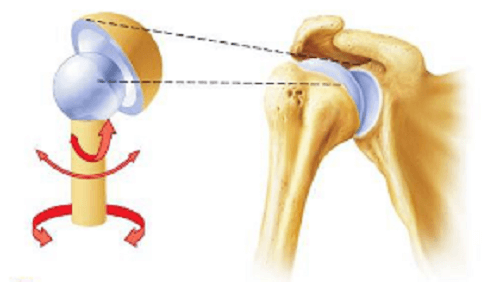Ball and Socket JointA joint is a point at which two skeletal bones get attached to each other. We have around six types of joints located in different places in our body. These joints are 
Ball and socket joints in a ball are inserted in the deep pocket like bone. Gliding joint has limited mobility but moves in all directions. Hinge joint bends in a single direction. Pivot joint can rotate on a single direction, the Saddle joint allows movement in multiple directions with limited mobility and the Condyloid joint allows movement in all directions with limited mobility. This joint is regarded as a ball because the bone is a sphere in shape, moving within a depression of another bone known as the socket. They are often known as spheroidal joints. A sphere is called the 3D shape of the ball. Most mammals have ball and socket joints in their body located at the shoulder and hips that allow a wide range of directions out of all of the synovial joints. Even the ball and socket joints are described as two types i.e. Condyloidal and enarthrodial joints. The condyloid joints are called the biaxial ball and socket joints. Biaxial joints are termed because they have two axes. The main example of biaxial joints are the wrists and ankles present in the human body. They are not exactly considered true ball and socket joints because they utilize more than one joint to attain the movement. Whereas Enarthrodial joints are considered a multiaxial ball and socket joints. Multiaxial joints are signified as multiple axes. These joints have a wide range of mobility and are placed at the shoulder and hip in the human body. How do ball and socket joints lead the movement?Ball and socket joint movement depend on both the shape of joints and muscle strength, ligaments, and tendons surrounding the bone area. Ball and socket joints have the ability to move in the following directions.
The broad range of movement and flexibility in these joints also give support and strength to the body. As the ball and socket joint in the hip requires more stability to support the core of the body than the shoulder joint. This is due to the support the hip must provide to the body. The required stability of the hip joint meant they have less movement than the shoulder joint. This is the reason why the split stunt is more difficult to do than it is to spread the full arms. The function of ball and socket joint is often copied in engineering program because of how it's effectiveness in the movement of body. Ball and socket rule is found in cars to help in steering and suspension system. They are also applicable in many other engineering streams where this type of movement is required. Where the ball and socket joints are located in the body?There are typically four ball and socket joints present in the human body.
Next TopicPhotosynthetic bacteria
|
 For Videos Join Our Youtube Channel: Join Now
For Videos Join Our Youtube Channel: Join Now
Feedback
- Send your Feedback to [email protected]
Help Others, Please Share










